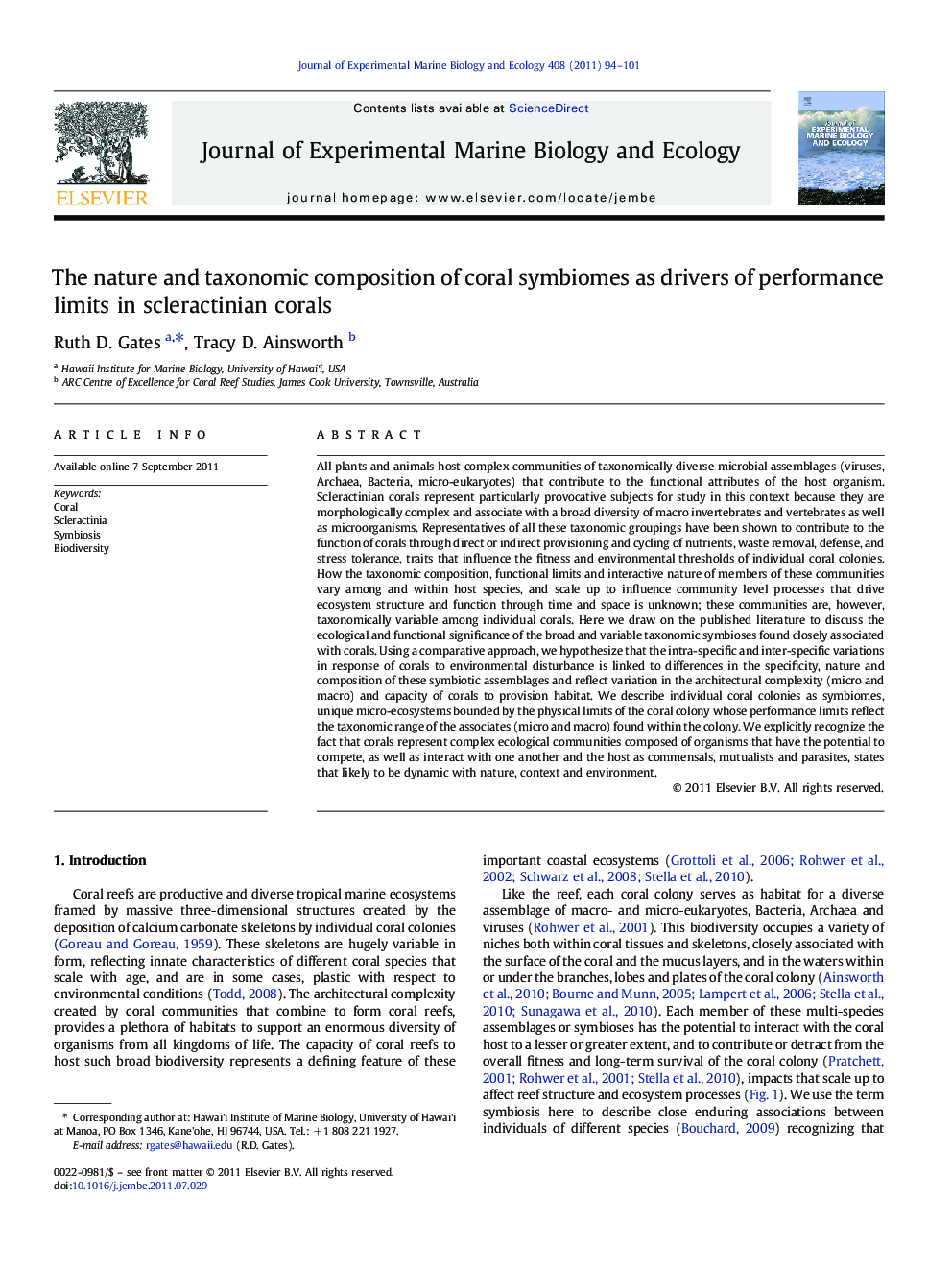| کد مقاله | کد نشریه | سال انتشار | مقاله انگلیسی | نسخه تمام متن |
|---|---|---|---|---|
| 4396229 | 1618456 | 2011 | 8 صفحه PDF | دانلود رایگان |

All plants and animals host complex communities of taxonomically diverse microbial assemblages (viruses, Archaea, Bacteria, micro-eukaryotes) that contribute to the functional attributes of the host organism. Scleractinian corals represent particularly provocative subjects for study in this context because they are morphologically complex and associate with a broad diversity of macro invertebrates and vertebrates as well as microorganisms. Representatives of all these taxonomic groupings have been shown to contribute to the function of corals through direct or indirect provisioning and cycling of nutrients, waste removal, defense, and stress tolerance, traits that influence the fitness and environmental thresholds of individual coral colonies. How the taxonomic composition, functional limits and interactive nature of members of these communities vary among and within host species, and scale up to influence community level processes that drive ecosystem structure and function through time and space is unknown; these communities are, however, taxonomically variable among individual corals. Here we draw on the published literature to discuss the ecological and functional significance of the broad and variable taxonomic symbioses found closely associated with corals. Using a comparative approach, we hypothesize that the intra-specific and inter-specific variations in response of corals to environmental disturbance is linked to differences in the specificity, nature and composition of these symbiotic assemblages and reflect variation in the architectural complexity (micro and macro) and capacity of corals to provision habitat. We describe individual coral colonies as symbiomes, unique micro-ecosystems bounded by the physical limits of the coral colony whose performance limits reflect the taxonomic range of the associates (micro and macro) found within the colony. We explicitly recognize the fact that corals represent complex ecological communities composed of organisms that have the potential to compete, as well as interact with one another and the host as commensals, mutualists and parasites, states that likely to be dynamic with nature, context and environment.
► We describe corals as symbiomes, multispecies super-organisms.
► Symbiomes encompass all enduring associations bounded by the coral colony.
► Symbiome complexity and function reflect habitat diversity.
► Interaction states in symbiomes are dynamic over space, time and environment.
► Symbiome complexity links to environmental sensitivity.
Journal: Journal of Experimental Marine Biology and Ecology - Volume 408, Issues 1–2, 15 November 2011, Pages 94–101